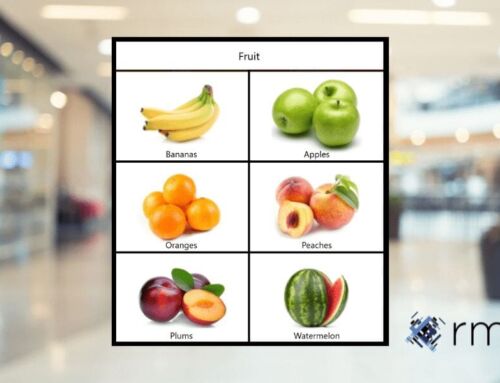Author
Tommy Chapman
Share
Cashing up for the last time? The benefits of becoming a cashless business

Paying for items in a shop using a cheque was once commonplace. Gradually fewer and fewer businesses allowed customers to do this, and now it is almost entirely unheard of. Could it be possible that cash will go the same way? At one point, cash was practically the only way of paying for goods and services, and there was a time when many businesses would only accept cash payments. Now though, it seems like cash payments might be dying out and the concept of cashless business is becoming a real possibility.
The idea might sound ridiculous to some, but this is the way that things seem to be going. In 2019, over seven million people in the UK were living an ‘almost cashless’ existence, double what it was two years before , and Covid-19 has only accelerated this trend.
People were already increasingly abandoning cash in favour of the convenience of credit and debit card payments, with cashless payments accounting for 51% of all payments in the UK in 2019 and 72% using online banking. Within London, more and more businesses are opting to accept card payments only.
As a consequence of this accelerating trend, the number of ATMs across the country is rapidly declining. 7,293 cash machines disappeared between January 2019 and September 2020, a rate of over 340 a month . Again, this has been exacerbated by the pandemic, as people are sensibly cautious of using public machines with touchpads and surfaces touched by large numbers of individuals. In March 2020, cash withdrawals from ATMs dropped by 60% year-on-year.
The declining numbers also mean that ATMs are becoming a less financially viable proposition, which means that free-to-use cash machines are disappearing far more quickly than their counterparts. Of course, this all feeds back into the continuing decline of cash as a payment method; fewer cash machines (especially free-to-use ones) means that it’s harder to get cash, forcing people to use card payments and leading to even fewer cash machines.
In response to this, and to help people pay for goods during the Coronavirus pandemic, contactless payment limits have been increased. First, they rose from £30 to £45 in April 2020, and then increased to £100 to “keep pace with customer and merchant expectations”.
Is cash still worth it?
Retailers now need to start asking themselves whether it might be worth getting ahead of the curve and becoming a cashless business now. There are certainly plenty of benefits, and few downsides to making the switch now, rather than waiting until changing customer behaviour forces your hand. Here are a few of the significant benefits of switching to cashless…
Speed and Efficiency
One major benefit to becoming a cashless business is that it’s simply what customers want. Cash now accounts for less than a quarter of transactions, and it’s common for people to pay for even small transactions with a debit or credit card or even wearable or mobile technology.
This is in part because one of the main benefits is speed and convenience. Card payments are much quicker to process than cash, as the customer can pay with the exact amount, so your cashier doesn’t have to spend time checking the amount they’ve been given or counting out change. This might not be a huge difference for any one transaction, but this can add up to significant amounts of time that an employee could be using on something more productive when taken across the entire working day.
As well as saving time at the till it also means that you can potentially save time reconciling and counting cash at the end of the day. In fact, with merchant services such as Dojo, you can simply print out an end-of-day transaction summary and track refunds and sales figures across multiple locations.
Security
In 2020 the retail sector alone lost £2.2 billion due to theft, an increase of 16% compared to 2019. Without cash on-site, you can significantly decrease the risk of theft. Break-ins could still result in the loss of valuable goods, but your takings will be safe. Also, if you do decide to become a cashless business, advertising this as part of your signage may help deter potential thieves.
As well as deliberate theft, honest mistakes are also a significant source of profit loss. Accidents happen, and giving the wrong change is a common error, especially during busy periods in retail businesses. The occasional mistake can be accounted for, but during peak times when cashiers are under additional pressure, the costs can quickly add up.
The Downsides
So those are some of the benefits; what about the downsides? The main downside to abandoning cash payments completely is that customers enjoy having a choice. Removing a long-standing option that people are used to having might not be viewed very favourably, especially if your customers include those from demographics who still prefer using cash to card payments, such as older people or those from low-income households.
For many retailers, becoming a cashless business might seem like an extreme step. It also brings the risk of alienating elements of your customer base. However, the data suggests that this is the direction the world is moving, and recent events have only accelerated this trend. As the number of card transactions continues to rise and cash transactions become increasingly rare, going cashless will come with a number of benefits, and it is something that businesses would do well to consider. Even if you’re not ready to take this step now, you should be thinking about how you will process the increasing number of card transactions and how you can best integrate card payment systems into the rest of your business.
If you have any questions about card and digital payment options or wish to talk to someone about your business needs, contact RMS here or call 0800 138 0050.
Key Terms
Share:
Sign up now for news and special offers!
Join our Newsletter
*We are collecting your email information in order to add you to our newsletter recipient list. You can unsubscribe from our communications at any time. You can do this by contacting us or by clicking the unsubscribe button on any of our communications with you.
You can find more information about the details we hold about you and the way we use them in our privacy policy, and you can access this here or we can send you a copy.




